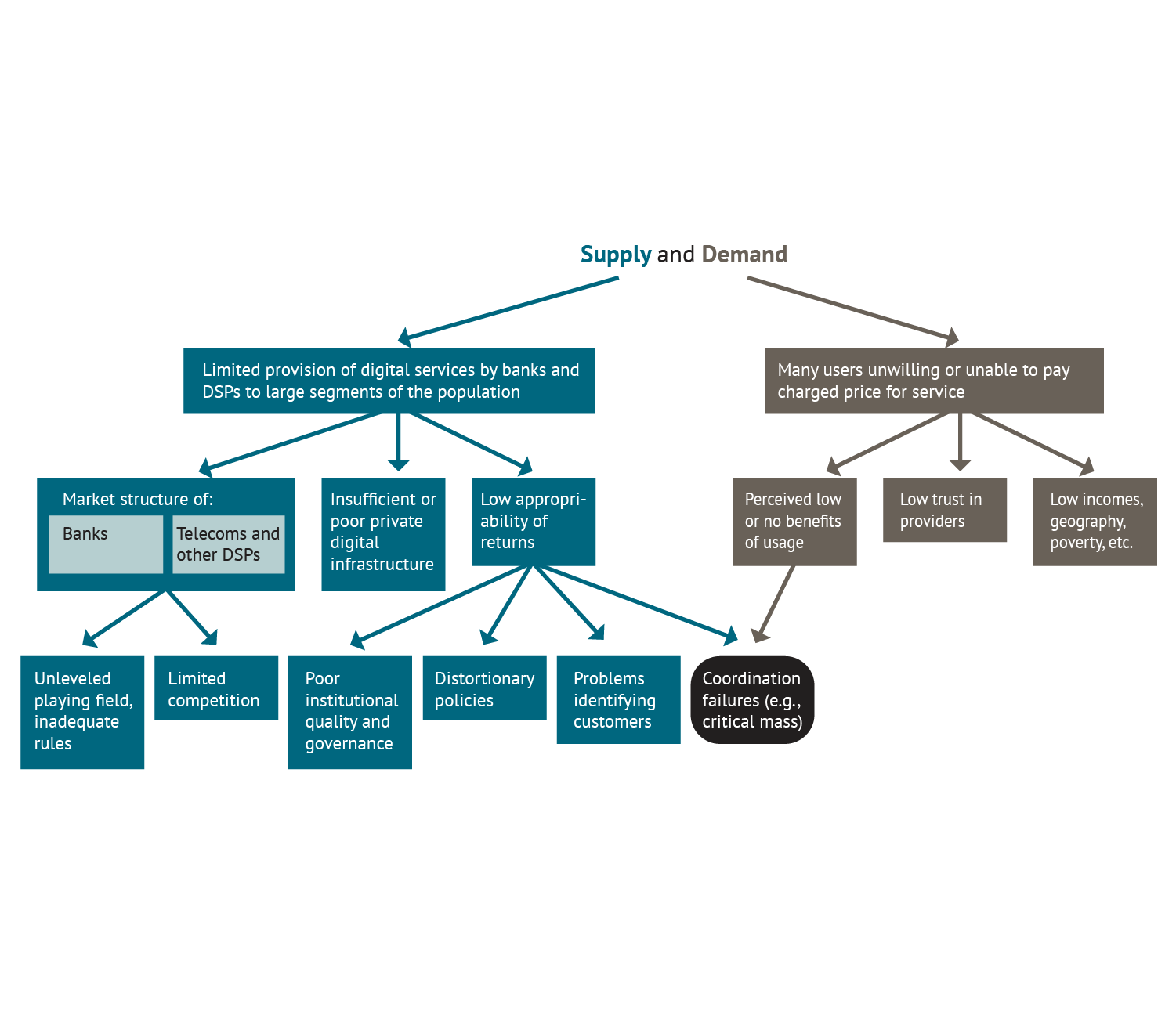Recommended
In recent years, a large number of countries have implemented policy changes to advance financial inclusion, especially by using digital financial services (DFS). However, results are mixed. While some countries are achieving impressive inclusion gains, others continue to fall short of expectations. How to properly diagnose the country-specific root causes of this shortfall and prioritize needed actions is a pressing question for policymakers in charge of designing and implementing financial inclusion strategies. Building on the Growth Diagnostic work by Hausmann and others, this paper provides an analytical framework (a decision tree) to identify country-specific constraints blocking progress with financial inclusion; that is, binding constraints. Using a deductive top down approach and dividing constraints between supply and demand factors, the tree analyzes various potential causes (branches in the tree). To identify the most relevant constraints, the methodology calls for analysis of the markets for financial services (particularly DFS) using observed (or shadow) prices and quantities. For its benchmarking approach, it proposes a wide-ranging set of indicators, including aggregate and micro-level statistics as well as survey data to reflect providers’ and consumers’ perceptions. For ease of exposition and illustrative purposes, the discussion of the tree uses many country examples. Recognizing constraints differ by financial service, trees are presented for payments and transfers, store of value, and credit services.
Download data here.
Rights & Permissions
You may use and disseminate CGD’s publications under these conditions.






